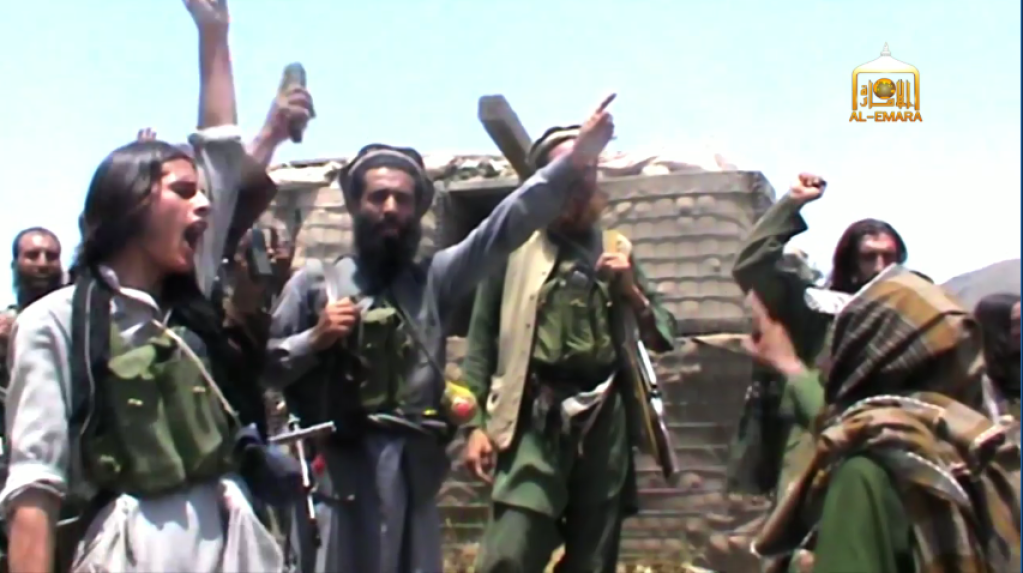
Afghan security forces and the Taliban appear to have traded grasp of two distant districts. Afghan security forces claim they have ejected the Taliban from the Khanashin district center in southern Helmand province, while the Taliban claim its seized control of Marawara in the northeastern province of Kunar.
“The district of Khanashin is cleared of enemies,” said Ayoub Salangi, Afghanistan’s deputy interior minister, according to Reuters. “Afghan forces inflicted heavy casualties” on the Taliban, he claimed, without providing an estimate. An Afghan Army official claimed that 42 Taliban fighters were killed in the fighting.
The Taliban hasn’t commented on the fighting in Khanashin, but the group rarely notes when it loses control of an area it has previously captured.
The Taliban has continued to press its offensive in Helmand to regain ground lost between 2009-2011 during the US “surge.” Of Helmand’s 13 districts, 4 are known to be controlled by the Taliban (Nowzad, Musa Qala, Baghran, and Dishu), and another five are heavily contested (Nahr-i-Sarraj, Sangin, Kajaki, Nad Ali, and Khanashin). Of the remaining four districts, The Long War Journal believes three (Garmsir, Washir, and Nawa-i-Barak) are contested, but data is not available to support this.
While the Taliban lost Khanashin, it claimed it took control of the Marawara, a district in the northeastern province of Kunar which borders Pakistan. Marawara has changed hands multiple times over the past several years.
The Taliban made the claim in a statement on Voice of Jihad which accompanies a video that “contains footage of Mujahideen liberating Marawara district and all surrounding check posts, large amount of spoils of war and details about the operations.” A screen shot from the video can be seen above.
While the Taliban’s claim cannot be supported independently in the Afghan press, the group has accurately reported the takeover of other districts in the past.
The Taliban now controls 39 districts in Afghanistan and contests another 39, according to data compiled by The Long War Journal. These numbers may be low given the methodology used to assess control and contested districts. [See map above and from The New York Times.]
Are you a dedicated reader of FDD's Long War Journal? Has our research benefitted you or your team over the years? Support our independent reporting and analysis today by considering a one-time or monthly donation. Thanks for reading! You can make a tax-deductible donation here.








6 Comments
As if no one knew this was on the horizon. Time has always been on their side(Taliban, AQ) to not recognize this is double (o) stoopid. To defeat this type of insurgent, one must either fight with overwhelming force, as in the Powell doctrine, or fight long drawn out campaigns. Obviously long wars are not what we excel in, so common sense dictates that we fight hard, indiscriminate battles that incapacitate our enemies in such a way as to make them sick of fighting.we do have this ability, we just don’t have the stomach for it, which could be our downfall there.
What is the significance of the clean shaven appearance of the Youngster in the foreground.
Using indiscriminate and overwhelming force would actually not only be worse it has been tried before. Genghis Khan was the one who really used that power.. read Khan tryng to fight afghanistan, they killed millions and made lands barren not even animal survived… But Khan said no matter how much we killed they keep coming back.. would raid their camps at night and slit throats… so please this has been tried and has not worked… the real thing to do was negotiate and make a realistic negotiation after 9/11 before the invasion… instead we let the anti taliban militias fight for us. then when they cleared territory we set up bases and were isolated inside them unless we did some heavily armed missons and came back…. this was an attempt at occupation that had no real goals…. failure from the start.
Likely a child soldier, thus exempt from the normal rules. Not uncommon, many mid-level Taliban leaders today started as child soldiers in 2001 and rose through the ranks partially by skill and partially by surviving.
Same with other groups.
Genetics.
To defeat Jihadi insurgencys rooted in the native population and society like the Taliban you need to understand what fuels it.
It’s pretty simple, as long as the average afghan women has at an average over 6 children there will never be a shortage of “surplus” young males that see only two options for themselves, fight or immigrate.
So by providing better medical support, food and education we make sure the Jihadi insurgency in Afghanistan will keep going for decades.
Now the average western liberal will scream that education counters violent jihadi ideology but thats plain wrong.
More educated young males without the existence of a sufficient amount of satisfying positions in Afghan society means more angry Taliban.
So either we make sure Afghanistan becomes a economic miracle or make sure every angry young men can immigrate to Europe or North-America…or we just accept the Taliban insurgency will go on for decades…or we enforce a one child policy which is obviously not feasible.